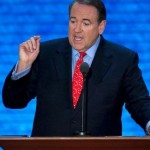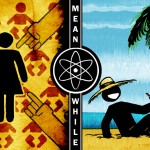Each Friday in Not Fit for Dinner, C. Ryan Knight explores political issues and the preconceptions guiding our understanding of and responses to them.
The most recent May Day renewed debate about the place of violence in social movements like Occupy Wall Street. Emerging from their hibernation, Occupiers expressed hope that the movement’s May Day protests would be invigorating and launch an American Spring—a hope that some have said fizzled after disappointing results. (This criticism has not gone unanswered.)
The Occupy protests that gained the most attention on May Day did so through violence. The center of the first major episode of violence in the Occupy movement, Oakland saw another wave of clashes and tear gas. Seattle experienced an outbreak of vandalism. Tension ran high in New York as protesters were arrested for what was deemed “disorderly conduct.”
Historically, May Day has had a shaky relationship with violence. It is a labor rights holiday born out of the Haymarket Affair in Chicago back in 1886, where protesters and police died when tension boiled over. The holiday is not officially recognized in the United States. (Even Google avoids stirring trouble with a holiday Doodle in the US, using it abroad each year instead.)
Violence does not always emerge from May Day. In 1971, a group that became known as the May Day Tribe gathered to shut down Washington, D.C. unless America itself “shut down” the Vietnam War. Influenced by the non-violent resistance of the civil rights movement, the May Day Tribe focused instead on advancing their People’s Peace Treaty and allowing congressmen opposed to the war to make speeches.
Like the May Day Tribe, Occupiers remained essentially non-violent last fall and winter. Still, the movement has always left room for violence through its acceptance of what’s known as “diversity of tactics,” a series of strategies for effective social activism. The initial non-violent action the movement took before winter helped it gain its fame through unjust instances of police brutality.
The movement’s drift into violence this week is cause for concern. There are significant dangers if Occupy Wall Street does not return to nonviolent tactics and denounce the recent violence. Last October, author and editor Nathan Schneider warned that violence could end up undoing the movement’s legitimacy and power. The August 2011 London riots came and went largely because of the reliance upon violence. With social movements, violence attracts attention and wows people, but it frequently fails to make a lasting impression. Also, those critical of movements like Occupy Wall Street consider their case closed when violence breaks out.
The model for the effectiveness of non-violent resistance is of course the composite account of Jesus’ arrest. Peter attempts to defend his Lord and cuts off a soldier’s ear. Christ, however, intervenes not against the soldiers but against Peter: “Stop! No more of this” (Mark 22.51). Violence would have interfered with what had to occur.
It should be said that Christ’s arrest marks the all-important moment where the “plan of salvation” essentially reaches the point of no return. The Occupy Wall Street movement, with its May Day efforts, can by no means claim equal importance to what takes place at this point in Scripture (as in Matthew 26.47-56, Mark 14.43-52, and John 18.1-13). The movement can only offer the chance of change, not salvation of any sort.
Nonetheless, this monumental episode in Christ’s life makes an important point: in the hour of danger when change must be accomplished, that change risks being hindered when someone (or groups of people) attempts to advance that change through violence.
The success of Occupy DC May Day is arguably due to its peaceful proceedings. Reporter Emily Crockett described the DC May Day as community-based and lively, what with “inequality” pong being played (with water, rest assured), teach-ins about organized labor throughout history, and so forth. Through all this, there was a sense of joyous reunion for protesters present.
Educational and community-building activities such as those in DC strengthen the Occupy movement far more than vandalism and violence. Protesters’ efforts will only improve if they endure violence without fighting back. The Occupy Wall Street movement and its offshoots would be very wise to omit violence from its diversity of tactics as they try to regain momentum.











